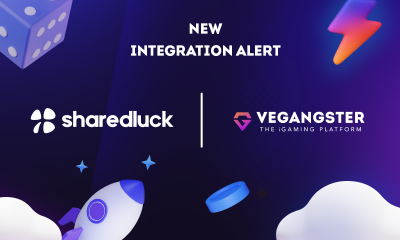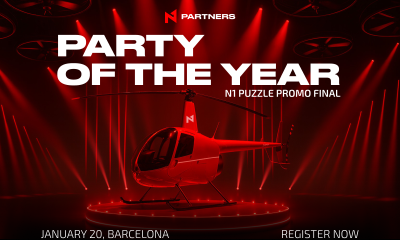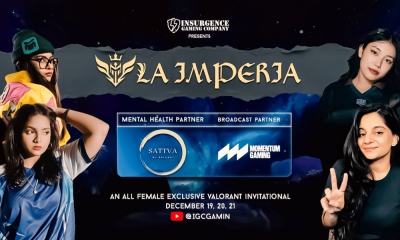Uncategorized
Exclusive interview with Henri Mirande, CTO and Co-founder of Kinetix
In a nutshell, Kinetix is an AI-driven platform that allows users to generate 3D content easily and quickly. But it is much more than what that quick summary suggests. Here we have with us its co-founder and CTO Henri Mirande in a free-flowing chat about the platform, its features, its vision, its philosophy and its future. So, without any more ado, over to Henri!
Q. Let’s start on a personal note. Tell us briefly about your life and career.
A. I’m an avid gamer. I spent my teenage years playing strategy games, clocking up a total of four thousand hours on Civilization IV alone. As a passionate gamer, I decided to study Engineering in Computer Vision, a field that would allow me to be close to the games industry. After conducting research I joined multiple exciting tech companies bringing solutions to developers and publishers, such as Dynamixyz. My experiences helped me see that AI technologies will transform multiple industries, which is when I made up my mind to start my entrepreneurial journey in AI for gaming!
Q. Now we shall move to Kinetix. What’s the story behind Kinetix? Kinetix, as we understand it, is a product of the Covid-19 era. What were the founding objectives of Kinetix?
A. Kinetix started after I met my co-founder, Yassine Tahi, during the Entrepreneur First program in 2020. We share a common passion for gaming and belief in the potential of AI. We started by interviewing some experts and pros who were our potential users. What brought us together is that we were both convinced that, with recent breakthroughs in research, we didn’t have to limit the AI opportunity to the pros but think about it as a tool for casual users too. In many of our early stage discussions investors were pushing for a SaaS model to address the market of 3D animation professionals. We were convinced that AI was going to give everyone new abilities and that a bigger market was going to be addressable in a short time frame. We made the choice to develop technologies for the mass market setting. The Kinetix vision is to Humanize Metaverse by allowing everyone to create their own stories through Emotes. This unique positioning gave us a strong first-mover advantage and we’re now seeing a lot of players starting to develop AI for broader audiences.
Q. Did you have a clear-cut idea at the beginning about the kind of platform you were going to develop for Kinetix and the kind of technological backbone required for it? Or did you innovate on the go towards the present platform and technological model?
A. We knew we wanted our tech to be very user friendly and as accessible as possible. We evaluate and make all our tech infrastructure choices with that objective in mind. It guides our development and we always leverage what we learn from our users to further simplify the creation or integration process. Our main metrics on our studio are the percentage of our users becoming creators and time it takes them to make their first creation. The metric we monitor on our SDK is the time it takes developers and publishers to integrate it, and we’re happy to say it now takes less than one day for junior game devs. By improving on these metrics, we ensure we’re creating tech that is able to onboard thousands of users and their User Generated Emotes into games and virtual worlds.
Q. You mentioned making the process of 3D content generation easier and more accessible. How far has Kinetix succeeded in doing that? Could you provide some stats, regarding the number of users and the amount of time needed to develop 3D content using Kinetix?
A. On average, our users need 2 to 3 minutes to create and finalize an Emote. More than half of the created Emotes use more than two of our AI and editing features, demonstrating they easily navigate through and play with the multiple creative tools we offer to create awesome Emotes. You don’t have to take our word for it though – give it a try and see how easy 3D content creation can be! Our user base is constantly growing with more than 33% growth each quarter.
Our biggest recent success is for our SDK. We engaged hundreds developers in a beta program that helped us develop it. We are still accepting registrations and invite every developer interested in integrating Emotes in their projects to sign-up as a beta tester.
Q. You also talked about monetization for the users and fairer sharing of ad revenue with the creators. Could you provide some details – for example, stats about sharing of revenues with creators before Kinetix and after Kinetix?
A. The Kinetix Emote SDK has been developed to enable Emote distribution cross games and virtual worlds. AI not only heightens creativity it also guarantees to deliver assets in consistent formats. Our Emotes are 3D animation files that essentially contain information about the position of different points over a given period of time. As opposed to avatar or weapon, they don’t compete with the look-and-feel of the game or virtual world, they can be used agnostically whether the aesthetic is “blocky” (like Roblox), or realistic (like Fortnite). Kinetix Emotes are designed to be interoperable assets and this makes a huge difference for creators, allowing their creations to be used across multiple environments. Interoperability expands usage drastically, which leads to increased asset value, and like many other gaming companies we believe creators must benefit from that fundamental change. Kinetix gives 95% of the value of the first sale of any User-Generated Emote to its creator, as explained in our white paper. This is comparable to what big Web3 virtual worlds offer for their creators, while creator fees on Web2 gaming platforms often range between 20 and 40% of the generated revenue.
Q. The other objectives you had while starting out were better self expression while creating 3D content and interoperability of the content across platforms. After nearly three years of operating, what are your thoughts on these objectives with reference to the performance of Kinetix?
A. With multiple integrations with games & virtual worlds currently being deployed we are beginning to deliver on our ambition of interoperability. One of the most exciting parts in our adventure is how we are progressively changing our focus towards Emotes. We define Emotes as animations that express avatars’ emotions like dances, gestures & celebrations. Working on Emotes and not 3D animations might seem a niche thing, but it is not! It’s a big challenge as we are now dealing with emotions that motions convey. We are creating new categories that are no longer just describing the movements but also the message they share. This is changing how we produce our own content, how we funnel the creative process for users, how we prioritize our R&D projects. We are convinced that this new approach allows us to build tech that is not only capturing movement but what it expresses. We feel that we are heading in the right direction to develop a new standard of self-expression technology.
Q. Now, tell us about the most eye-catching features of Kinetix?
A. The feature I am the most proud of is our Video-To-Emote technology. It is the first one we released but we are now at v1.5 and we can say that our AI has been polished and is getting better and better. Our challenge of delivering high-quality 3D animations with a single camera is very complex. We see many players delivering great tech but their setups are often time-consuming and expensive. We made the decision to give everyone, or at least every smartphone owner, the possibility to become a 3D creator for free and we believe this is the right decision. The level of expertise we reached on our Video-To-Emote technology is awesome and I am proud to see that in addition to the studio we are now offering it as a standalone solution with the recent launch of our “Motion Portal” tool. This solution allows brands to set up a Portal where their fans just upload their 10s videos to animate their favorite brand avatar and universe. It fully relies on our Video-To-Emote and we generate thousands of high-quality videos without any need for animation cleaning. This level of performance is what we were aiming for with my team of 10+ R&D engineers and I am happy to see that the results are engaging our partner communities!
Q. What are the new features to be launched in the near future?
A. We have really exciting features coming soon. One that really excites me is the release of our facial animation feature coming in 2023. My team worked hard to deliver a facial recognition technology embedded within our suite of AI models for 3D animation. Results are outstanding. I am excited to see our community of creators testing it by the summer. We know it will increase the level of fidelity of users’ creations. Mixing body motion capture with facial, style transfer as blend models allows us to provide the most comprehensive suite of AI technologies applied to 3D animations on the market.
Q. Our readers would also love to hear about some of the impressive 3D content generated via your platform. If you don’t mind, provide some great examples.
A. One story I really like is the Next Dancer one. We constantly chat with our community on Discord and also arrange interviews with them. This is how we met with Damien Daube. He is a former professional breakdancer that was using our tech to record his dances and save them as 3D files. When we spoke for the first time he explained to us that he would love to see a game leveraging our tech to allow dancers to bring their dances into a virtual world. It was at the exact moment we were starting to build our SDK. Our paths were perfectly aligned so we went on a common journey and we are really happy that Damien has successfully launched the first version of Next Dancer: the first AI based dance game. This new gameplay is seducing players such as famous IPs, with the French version of “Dancing with the Stars” having already made a collection of dances for the game. Embedding our tech at the core level of such a great game empowers creativity and UGC.
Q. Machine learning and artificial intelligence are witnessing phenomenal changes at a rapid pace. There have been reports that some of the big players in the field are eying 3D content generation using AI, after similar products in text and 2D graphics like ChatGPT and DallE? Do you see a threat or opportunity here?
A. All those new AI releases are a tremendous opportunity. One simple fact that proves it, is that over the last weeks almost every tech enthusiast has learned how to prompt. It is now clear for a lot of people that they will benefit from AI to improve their work and creative process. We believe those general models are putting the spotlight on how AI can impact multiple industries and gaming is a target of choice. Those models are trained on a very large dataset and this is a big difference comparing how 3D animations models are currently being developed. They mainly rely on academic datasets which are way smaller. Being able to collect large sets of animations is one of the main challenges for our technology. As Kinetix not only addresses professionals but creators at large, we built a top proprietary library of animations coming from casual users. This gives us a unique competitive advantage. It sets the foundation for training larger models in animation to excel in our industry. Our R&D tests prove that we are gaining a strong and long lasting competitive advantage.
Q. Finally, do you have any advice or suggestions to new entrepreneurs, especially as someone who started out and succeeded during the Covid pandemic?
A. My advice is to do what you love and love what you do! Founding and managing a company is an exciting adventure when shared with passionate people. What I care about the most is to work with enthusiastic people who have very strong convictions on the future of AI and gaming. We are very cautious in our recruitment process to make sure that every newcomer brings a little more passion to the team.
Powered by WPeMatico
Uncategorized
GoldenRace launches Goal2Win to bridge the gap between football and numbers

Reading Time: 2 minutes
The world of sports betting and gaming is set for a major shake-up with the launch of GoldenRace’s innovative, new number game, Goal2Win, designed to captivate the massive global football audience. Goal2Win successfully bridges the gap between the universal passion for the “king of sports” and the proven thrill of number-based predictions, offering partners a fresh, high-potential product for monetisation.
Goal2Win is a premium offering that takes the familiar, classic number game format and integrates it with a dynamic, football-centric theme. This unique combination makes the game instantly recognisable yet excitingly new, appealing both to seasoned sports bettors and newcomers seeking an engaging, simplified experience.
Goal2Win is GoldenRace’s proposal to mix innovation and tradition. It offers operators a product that leverages the immense reach of football fandom while delivering the straightforward, engaging gameplay and massive win potential expected from a top-tier number game. It’s a compelling blend of excitement, simplicity, and significant reward potential.
Key features driving engagement and potential winnings:
Goal2Win is engineered for maximum player retention and high stakes, boasting dynamic gameplay and powerful features:
- Multiplier feature: Players can place the same set of bets across an impressive twenty-two consecutive events, significantly driving up potential winnings and ensuring sustained engagement over time.
- Jackpots and Mega Jackpots: The game includes tiered winnings with both standard Jackpots and highly coveted Mega Jackpots, promising life-changing sums and acting as a powerful player motivator.
- Quick picks: For rapid access to the action, the Quick picks option allows the system to randomly select numbers, streamlining the betting process for players.
- Row/Column selector: Enhancing the user experience, selector buttons enable players to easily pick an entire row or column of numbers, simplifying sophisticated betting.
Goal2Win represents a unique opportunity for operators to tap into the immense global football fanbase with a product that is both innovative and instantly recognisable. It stands poised to become a staple offering, driving higher stakes and attracting a broader demographic to the operators’ portfolio.
The post GoldenRace launches Goal2Win to bridge the gap between football and numbers appeared first on European Gaming Industry News.
Uncategorized
PayAdmit partners with Yaspa to integrate Pay by Bank on its payments platform

Reading Time: < 1 minute
Yaspa, the Pay by Bank fintech, today announced a partnership with PayAdmit, the London-based payment software provider and orchestrator used by merchants across eCommerce, iGaming and digital services. The integration brings Pay by Bank to PayAdmit’s platform, giving its merchants a faster, secure, cost-effective way to accept customer payments with real-time confirmation.
PayAdmit offers a modular payments stack that includes White Label, Cashier Service, Payment Bridge and Payment Concierge Service — a high-touch support layer for resolving payment issues in real time. The platform aggregates 350+ global payment methods and provides streamlined onboarding, enabling merchants to go live in as little as 14 days.
Adding Yaspa gives PayAdmit’s clients a high-conversion bank payment option built for speed, conversion and compliance.
Yaspa’s Head of Commercial, Amie Kadhim, said: “PayAdmit moves fast and sets a high bar on payment performance, reliability and checkout experience. We’re excited to power their next chapter with instant bank payments that are speedy, secure and deliver a smooth, mobile-first experience – boosting approval rates and settling funds immediately.”
For PayAdmit’s merchants, the integration with Yaspa delivers:
- Real-time deposit confirmation
- Lower processing costs versus traditional methods i.e. debit and credit cards
- Reduced fraud and chargeback risk with bank-level authentication
- A smoother mobile journey with no card details to key in
Yaspa’s benefits align with PayAdmit’s focus on performance, security and a modern, merchant-friendly toolkit.
Vladyslav Kolodistyi, CEO of PayAdmit added: “Our mission is to give merchants a flexible, future-proof payments stack. Partnering with Yaspa adds a best-in-class, instant bank payment option, so clients get higher conversion with less complexity.”
The post PayAdmit partners with Yaspa to integrate Pay by Bank on its payments platform appeared first on European Gaming Industry News.
Uncategorized
Continent 8 appoints Julia Weygandt as Head of Client Growth & New Business

Reading Time: < 1 minute
Continent 8 Technologies, a leading provider of cutting-edge managed IT solutions designed for the global iGaming and online sports betting industry, announces the appointment of Julia Weygandt as Head of Client Growth & New Business.
Based in Malta, Julia will spearhead strategic initiatives to drive customer growth and capture new market opportunities globally, working closely with the existing Sales team and Practice Leads.
Julia brings over 20 years of experience in gaming, entertainment, and technology, with a proven track record in commercial strategy, international market expansion, and strategic partnerships. Her career includes senior roles such as COO at G Games and Tornado Games, and Head of International Partnerships at GAMOMAT, where she successfully scaled operations and delivered significant revenue growth.
Julia is an active advocate for diversity and leadership in gaming, serving as a Board member for Global Gaming Women and leading partnerships for the Behind the Gloves initiative, which combines boxing and corporate engagement to support charitable causes.
Nick Nally, Chief Revenue Officer at Continent 8 Technologies, commented: “Julia’s appointment reflects our commitment to delivering exceptional value and growth opportunities for our customers. Her deep industry knowledge, commercial acumen, and passion for building strong partnerships make her an outstanding addition to our team. We are excited to see the impact she will have as we continue to expand globally.”
Julia Weygandt, Head of Client Growth & New Business, added: “I’ve known the Continent 8 team for a long time; they are a trusted and respected partner to the world’s leading iGaming operators and suppliers, and I am thrilled to join at such an exciting time. My focus will be on driving client success through innovative solutions and strategic growth initiatives, ensuring we continue to lead in this fast-evolving industry.”
The post Continent 8 appoints Julia Weygandt as Head of Client Growth & New Business appeared first on European Gaming Industry News.
-

 Latest News6 days ago
Latest News6 days agoVegangster Gives Operators Real-Time Jackpot Control and a New Revenue Stream with Sharedluck’s JackpotX
-

 Latest News6 days ago
Latest News6 days agoRegistration Open: N1 Puzzle Promo Show & Winner Announcement in Barcelona
-

 Central Europe7 days ago
Central Europe7 days agoScatterKings adds sugar-coated spin to Austria with bespoke win2day partnership
-

 Latest News7 days ago
Latest News7 days agoTop 5 Newest High-RTP Slots at Social Casinos This Month
-

 affiliate marketing5 days ago
affiliate marketing5 days agoSOFTSWISS 2025: 45% Game Portfolio Growth, LatAm Extensive Expansion and Flagship iGaming Trends Report
-

 Asia6 days ago
Asia6 days agoInsurgence Gaming Company Introduces La Imperia, a Community-First All-Female VALORANT Tournament
-

 Christos Zoulianitis Chief Commercial Officer at ENJOY6 days ago
Christos Zoulianitis Chief Commercial Officer at ENJOY6 days agoENJOY Gaming turns up the heat with Hotfire Diamonds 2: Hold and Win 3x5x3
-

 Latest News7 days ago
Latest News7 days agoSlotland’s Crown Jewel, Gods of Egypt, Resurrects with Enhanced Features



















